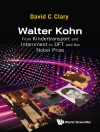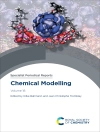In a classical kinetic resolution, two enantiomers of a racemate are transformed into chiral products at different rates with a maximum theoretical yield of 50%. However, the need to reduce costs and waste in synthesis have led to efforts to develop novel resolution procedures proceeding beyond this 50% limited yield. This has led to the evolution of classical kinetic resolution into dynamic kinetic resolution (DKR), allowing a quantitative yield of one of the enantiomers. DKR combines the resolution step of kinetic resolution with an in-situ racemization of the chirally-labile substrate. It is only in the last two decades that chiral green organocatalysts have been demonstrated to be capable of promoting DKRs considerably expanding the synthetic scope of the powerful concept of DKR.
Collecting all the developments in the field of DKR, this book shows that a wide variety of organocatalysts allow excellent levels of stereocontrol and yields in many types of transformations. It is a great resource for academics and industrialists interested in green enantioselective catalytic reactions.
Содержание
Introduction; Dynamic Kinetic Resolutions Promoted by Cinchona Alkaloid Catalysts; Dynamic Kinetic Resolutions Promoted by Amino Acid Catalysts and Derivatives; Dynamic Kinetic Resolutions Promoted by Phosphoric Acid Catalysts; Dynamic Kinetic Resolutions Promoted by N-Heterocyclic Carbene Catalysts; Dynamic Kinetic Resolutions Promoted by Thiourea Catalysts; Dynamic Kinetic Resolutions Promoted by Pyridine-based Lewis Base Catalysts; Dynamic Kinetic Resolutions Promoted by Tetramizole Catalysts; Dynamic Kinetic Resolutions Promoted by Other Organocatalysts; General Conclusion
Об авторе
Hélène Pellissier is a Researcher at the Centre National de la Recherche Scientifique (CNRS), where she focuses in organic synthesis.












